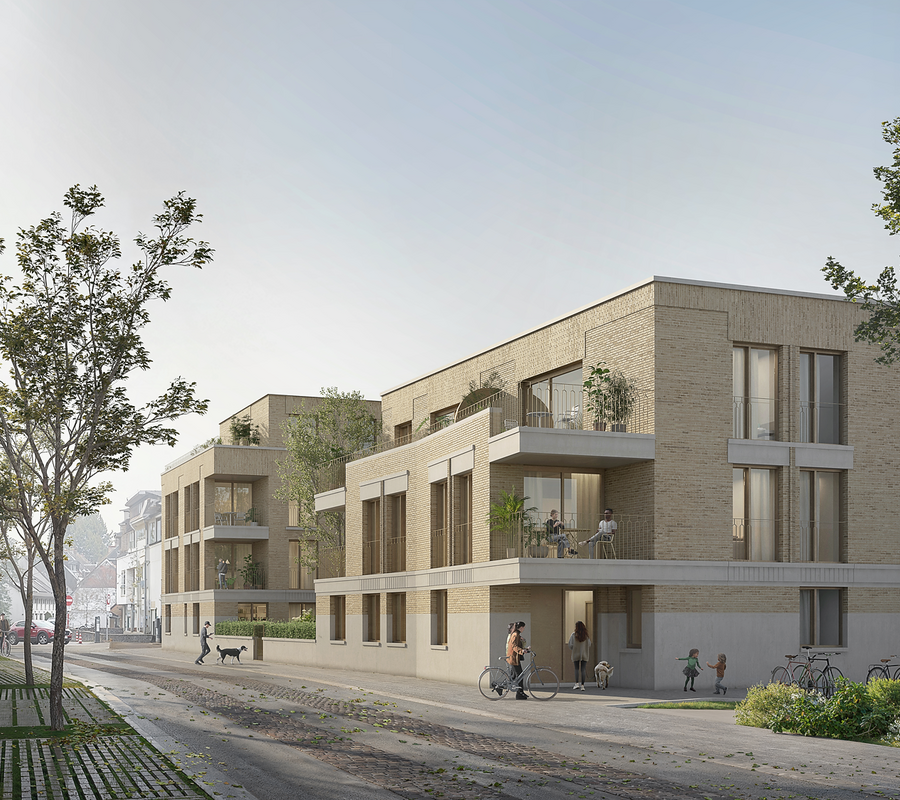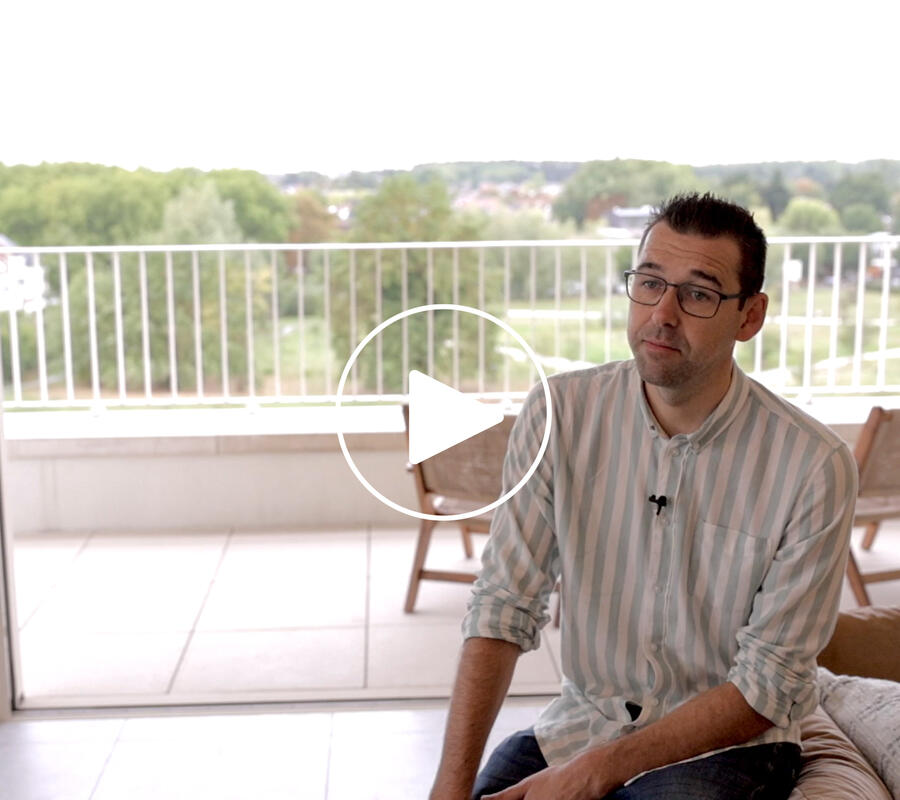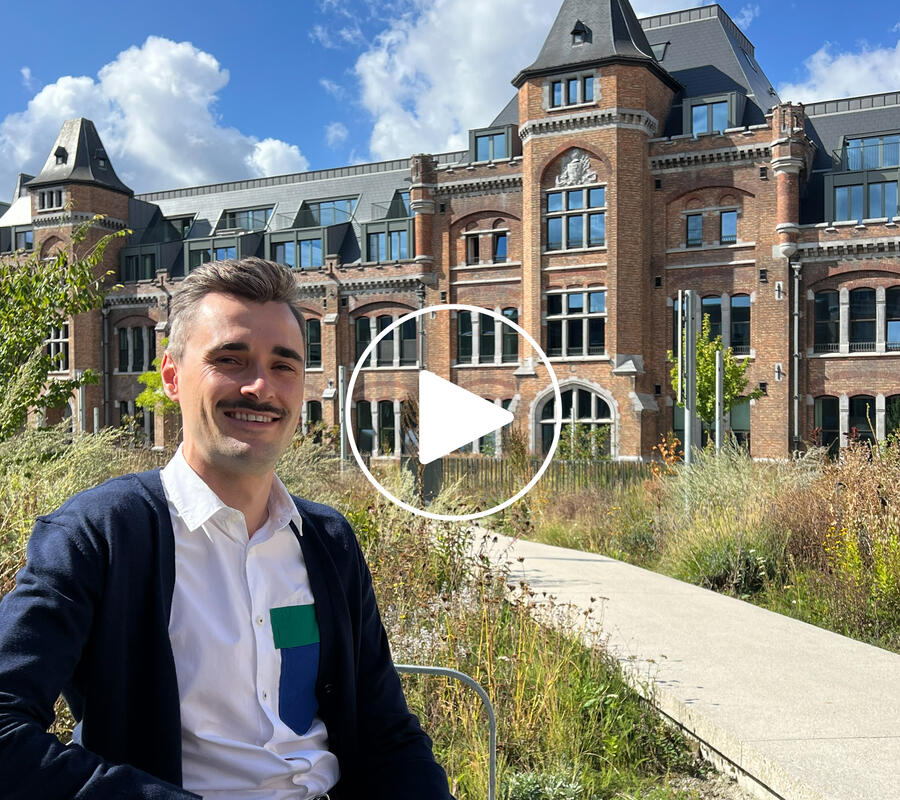From operations in storage units and a homemade ambulance to a modern hospital and, in the foreseeable future, a new residential area: ‘Maarten’ has a truly remarkable history.
The former campus of the AZ Sint-Maarten hospital on Leopoldstraat is being reduced to rubble once and for all. The hospital was originally established and expanded personally by Doctor Désiré Peeters and his family. The remarkable history of the site in Mechelen has laid the foundation for a new working class neighbourhood.
In 1913, after having studied in Leuven and Paris, Désiré Peeters (1885-1968), the son of modest farmers from Neerijse, returned to Mechelen, where he had attended secondary school at the Klein Seminarie as a teenager. A year later, he married the love of his live, Anna Salmon. That same year, Doctor Peeters and his wife decided to buy two houses, one at the end of Leopoldstraat and the other right around the corner on Willem Rosierstraat. Both buildings were connected at the back.
Construction work began immediately after the purchase. On Leopoldstraat, the storage units were converted into an operating theatre and, on Vaartstraat, the couple created enough space for six beds and living quarters for three ‘Black Sisters’ (from the Black Sisters Monastery). The Sint-Jozefskliniek opened its doors at the end of 1915.
Doctor Peeters took care of the consultations and operations, while his wife took on 101 other tasks, such as bookkeeping for the clinic. The Black Sisters were in turn responsible for patient care and also helped Anna raise her eight children.
The collaboration with the Black Sisters was not without its challenges. After all, the archdiocese was not exactly pleased with the establishment of an independent clinic. At a certain point, the sisters even had to leave the clinic by order of the diocese. But some left the convent in order to continue working as nurses. Since Désiré was a devote Catholic – and very socially active – they managed to eventually iron out their differences. The clinic made a name for itself and was respected. Those with limited resources received help free of charge, while those with deeper pockets paid more for the services.
Private ambulance
During the interwar period (1923-32), the clinic was first expanded with an additional wing, creating enough space for 25 patients and a chapel. Doctor Peeters did much of the work himself. He served as the architect, contractor, mason and painter all at the same time – not to mention car mechanic! After all, Désiré even built his own ambulance, the first ambulance in Mechelen – a converted old Belgian Minerva. It was used not only to transport patients, but also occasionally during the numerous renovation projects to transport bricks and other building materials.
To Doctor Peeters, building was yet another aspect of his social engagement. When a woman who struggled to make ends meet gave birth to triplets at the clinic, he had a house built for the family in Muizen at his own expense. He also established School Colonies in that neighbourhood, which he often visited, bringing a large pot of soup with him. In other words, he did his part to help the community, and not only as a doctor.
V-bomb
The clinic also experienced rough times. During the Second World War, a V-bomb dropped by the Germans exploded on Leopoldstraat in 1944. The windows and doors of the clinic were shattered and essential medical equipment was seriously damaged as a result. Doctor Peeters had no choice but to
close the Sint-Jozefkliniek temporarily. His son Jules succeeded him in 1948. He, too, was a surgeon. But Désiré did not completely let go of the clinic. He continued building onto it, together with his children and
grandchildren. The hospital was expanded once again and, in 1954, could accommodate 85 beds. Further modernisation work took place in the years that followed. At the end of the 1960s, for example, additional operating theatres and a new maternity clinic were added. Doctor Désiré did not live to see the final work on the hospital, passing away in 1968 at the age of 83.
CM
The fifth – and final – expansion by the Peeters family took place in the early 1970s. This is when the current buildings were constructed, with one of the sons as the architect: namesake Désiré Peeters. New radiology equipment and operating tables were purchased and an emergency ward established. The Minister of Public Health at the time, Jos De Saeger, officially opened the new, modern hospital.
But there was another side to the coin: until this point, everything had been built with private capital, but a new and much larger hospital required larger funds. The family searched for and found a buyer: Christelijke Mutualiteiten (CM) (Christian Mutuality health insurance fund). Both parties agreed that all members of the Peeters family actively involved in hospital operations could remain at the hospital until retirement.
In the years that followed, the hospital was expanded further and, in 1998, ultimately merged with the Sint-Norbertus Hospital in Duffel. This led to the establishment of the AZ Sint-Maarten. To this very day, the hospital group continues to be a household name in Mechelen and far beyond. Two years ago, the hospital relocated to a new hospital complex on Liersesteenweg, as a result of which the old buildings on Leopoldstraat became vacant.
Source: Peeters Family Archive

The remarkable history of ‘Maarten’


